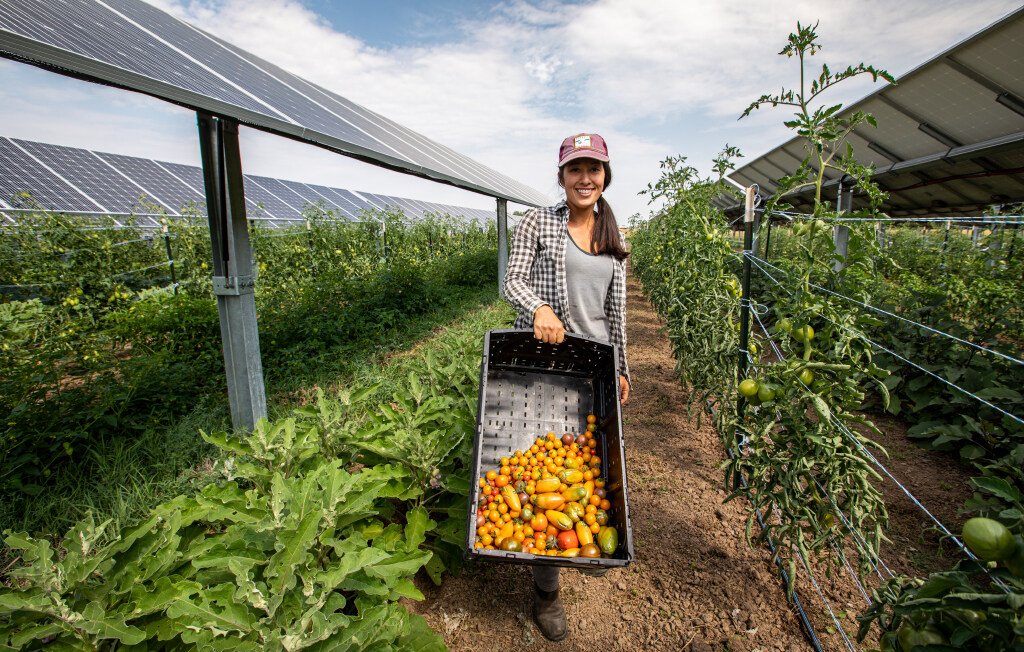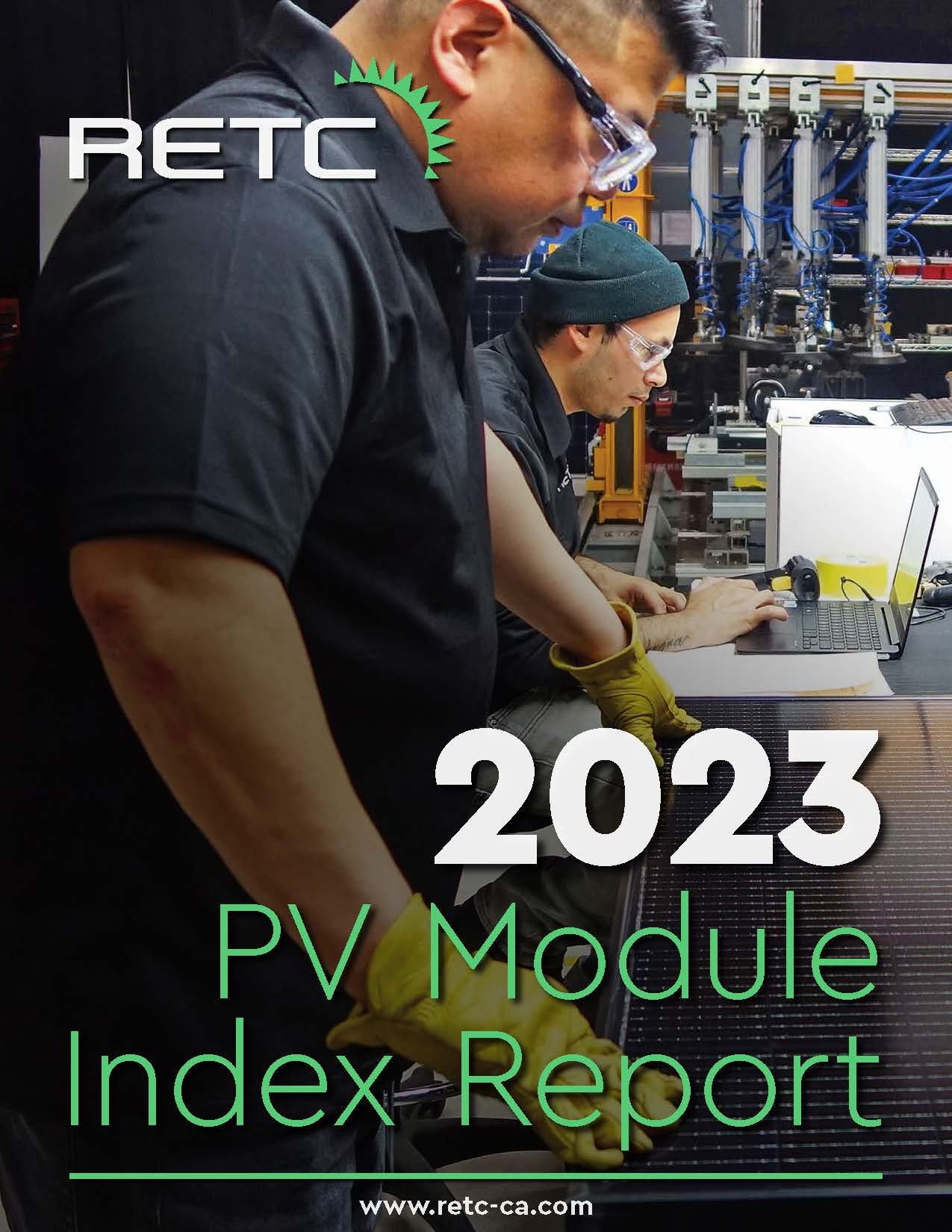Responsibly Scaling Solar Development
As early as 2027, cumulative solar generating capacity could surpass that of hydropower, natural gas, and coal. Here, we showcase some of the ways a rapidly expanding solar industry is maximizing its climate risk mitigation benefits.
Company-owned sheep grazing at Silicon Ranch’s Snipesville Solar Farm. [Credit: Silicon Ranch]
The solar industry will play a prominent role in global efforts to mitigate the worst impacts of human-caused climate change. In its Climate Change 2023 report, the United Nations’ Intergovernmental Panel on Climate Change concludes that solar project deployment is the single best option for reducing the energy sector’s greenhouse gas emissions. Meeting this moment is both a transformative business opportunity and a cause for reflection.
With great power comes great responsibility. By rising to the occasion, solar industry stakeholders can help save millions of lives, protect against widespread ecosystem collapse, and attract international investment. Doing so requires that the solar industry itself operate sustainably, which it can accomplish by minimizing its carbon footprint, mitigating its environmental impacts, promoting a circular economy, and fielding durable products and systems.
CARBON FOOTPRINT
Maximizing climate risk mitigation benefits while increasing global operations requires that the solar industry align business practices with climate change mitigation goals. The single most important metric of success on this front is reducing net greenhouse gas emissions. In other words, a rapidly expanding solar industry needs to minimize its growing carbon footprint.
Transporting solar modules and other essential supply chain components over long distances contributes to global warming and climate change. Locating manufacturing facilities closer to the point of use can significantly reduce greenhouse gas emissions. As added benefits, onshoring and nearshoring manufacturing facilities and the ancillary supply chains support local economies while reducing product delivery lead times and supply chain risks.
“We view all of our projects as an opportunity to distribute economic impact while minimizing embodied carbon,” explains Nick de Vries, chief technology officer at Silicon Ranch, a Nashville, Tennessee–based solar project developer. “Today, we own and operate more than 2.3 GW of solar and have signed contracts to increase our portfolio to more than 5 GW nationwide. Part of what is unique about our business model is that we consider carbon when evaluating all products—modules, inverters, and trackers.
“In 2019, when Qcells opened its factory in Dalton, Georgia,” de Vries continues, “we bought the first year of production. Why? Because this purchase agreement maximized local economic benefits while minimizing transit times to our Bancroft Station Solar Farm project. Proximity not only accelerates the speed of business but also facilitates transparency and decarbonization.”
ENVIRONMENTAL IMPACTS
Sustainable land use is another way for the industry to facilitate a holistic transition to an increasingly solar-powered future. Environmentally conscious practices include relatively simple design adaptations, such as using terrain-following single-axis trackers that minimize topsoil disturbance and erosion. At an even deeper level, state-of-the-art regenerative energy practices and agrivoltaics offer meaningful opportunities for future solar project land use improvements.
The guiding principle behind regenerative energy is identifying and implementing solar development practices that restore and revitalize ecosystems. In other words, its goal is to improve soil, habitat, and biodiversity at solar project sites via strategic land management. This holistic approach enhances soil health, slowing water runoff and improving carbon capture capabilities. It also reduces long-term operating expenses.
“Before Silicon Ranch adopted regenerative land management practices,” says de Vries, “we had issues with erosion and vegetation. As a result, we were spending a lot of money on civil repairs and vegetation management. We sometimes spent money twice to repair damages resulting from mowers or herbicide overspray.
“Serendipitously, we started development on a project in Georgia and had options to buy the land. We discovered that one of our neighbors was a world-renowned regenerative rancher, Will Harris of White Oak Pastures. After meeting Will and learning more about his approach to land management and soil health, we began to look at the land under our panels as a biological asset rather than as an operational liability. We realized we could integrate regenerative land management practices with solar power production and ultimately deliver better power plants. It was not only technically feasible but also made long-term economic sense when compared to conventional practices.”
As solar expands into more rural areas, solar project developers increasingly encounter pushback from farmers and opposition from neighboring communities. Agrivoltaics—a nascent business model that seeks to colocate agricultural land uses with PV power generation—may one day ease these land use conflicts. Today’s large-scale agrivoltaic projects generally incorporate sheep grazing or pollinator habitat. Early-stage commercial activities are also underway that combine elevated ground-mounted PV arrays with shade-tolerant row crop cultivation.
Tomatoes harvested at Jack’s Solar Garden, the largest U.S. agrivoltaic research project. [Credit: Werner Slocum / NREL]
CIRCULAR ECONOMY
Equipment recycling and reuse are essential for fostering long-term industry sustainability and owning this narrative in the court of public opinion. Lazard’s latest levelized cost of energy (LCOE) index estimates that passage of the Inflation Reduction Act (IRA) may drive the effective LCOE for some solar and wind projects to $0/MWh. In response to this sea change in the market, the fossil fuel lobby is increasing its efforts to discredit renewables. A common refrain emanating from the chorus of climate change deniers is that end-of-life solar products generate “mountains of waste.”
Though disingenuous, this anti-solar propaganda contains a kernel of truth. In its nascency, the solar industry did not generate waste at a scale adequate to support a specialized recycling ecosystem. Today, industry scale is no longer a bottleneck for recycling investments. Since its founding last year, startup Solarcycle has raised $37 million to scale up its proprietary solar module recycling capabilities.
“We currently have about half a billion solar panels installed in the United States,” notes Suvi Sharma, Solarcycle’s co-founder and CEO. “This number is large enough to support a profitable solar recycling business according to our statistical models. Three years ago, aging systems, manufacturing yield losses, shipping breakage, installation breakage, product warranty failures, weather damages, and repowering activities accounted for about half a million end-of-life solar panels in the United States. Today, that number is approaching 2 million—and will increase exponentially.
“Our proprietary recycling technologies and processes can extract up to 95% of the high-value content from crystalline silicon solar panels. We can then return materials such as silver, silicon, aluminum, copper, and glass back to the supply chain to make new solar panels. Recycling these raw materials makes solar more sustainable and scalable. Using recycled aluminum to make new panel frames, as an example, uses 95% less energy than frames made by mining virgin bauxite ore.”
Reusing decommissioned solar equipment in good working order can support secondary markets while further improving sustainability. “Before we recycle operating equipment that the original owner deems end of life, it is important that we use it through the end of its working life,” explains Kate Collardson, cofounder of SolarRecycle.org and senior manager of residential operations for Omnidian. “There are many options for selling or donating used solar materials. This option maximizes a product’s useful life before permanent decommissioning, which is essential for our industry to be truly sustainable.”
PRODUCT DURABILITY
Extending the useful life of solar products and projects is the most impactful way to improve industry sustainability. Product durability minimizes the frequency of repair and maintenance activities while reducing waste and conserving raw materials throughout the supply chain. In the process, it optimizes energy yields, financial performance, investor confidence, and decarbonization.
Imagine two functionally equivalent PV power systems installed adjacent to one another, both with the expectation of a 25-year operating life. In a low product durability scenario, the modules on Project A suffer from premature degradation and are replaced under warranty in Year 12. In a high product durability scenario, the modules on Project B degrade less than expected and remain in service until Year 50.
In the downside scenario, stakeholders must deploy modules twice to meet baseline performance expectations, limiting product availability for other sites. In the upside scenario, deferred decommissioning preserves modules for new project sites, which increases cumulative PV capacity and reduces net greenhouse gas emissions. In practice, the only difference between these very different outcomes might be a seemingly insignificant bill of materials (BOM) change—and the rigor of the project stakeholders’ technical due diligence.
RETC’s best-in-class testing and engineering due diligence serve, first and foremost, to mitigate project-level risks associated with product durability and asset performance. Benefits of this work accrue at the portfolio level, ensuring investment returns for project sponsors and insurers and an unimpeded flow of investment capital. By facilitating continued solar market growth, these products and services are foundational to efforts to promote energy security and effective decarbonization.
—This article originally appeared in RETC’s 2023 PV Module Index Report.






